
Acta Dermatovenerologica Croatica
Scope & Guideline
Fostering Collaboration for Skin Disease Solutions
Introduction
Aims and Scopes
- Clinical Dermatology Research:
The journal publishes studies on various skin diseases, including common conditions like psoriasis, dermatitis, and skin cancers, along with rare dermatological disorders. This focus supports a comprehensive understanding of skin pathology. - Autoimmune and Inflammatory Skin Diseases:
A significant portion of the research addresses autoimmune conditions such as pemphigus and hidradenitis suppurativa, highlighting their clinical manifestations, treatment responses, and underlying mechanisms. - Innovative Therapeutic Approaches:
The journal features studies on new treatments and therapeutic strategies, including biologics and systemic therapies, providing insights into their efficacy and safety in managing complex dermatological conditions. - Dermatopathology and Histopathological Studies:
Research involving histological analyses and case reports enhances the understanding of skin lesions, aiding in accurate diagnosis and therapeutic decision-making. - Public Health and Epidemiology in Dermatology:
The journal also explores the epidemiological aspects of skin diseases, including the impact of environmental factors and public health initiatives on skin health.
Trending and Emerging
- Impact of COVID-19 on Dermatological Health:
Numerous publications have emerged addressing the effects of the COVID-19 pandemic on skin conditions, including new dermatoses and exacerbation of existing diseases, showcasing the pandemic's significant impact on dermatology. - Integrative and Multidisciplinary Approaches:
An increasing emphasis on multidisciplinary care for complex dermatological conditions is evident, with studies exploring the interplay between dermatology and other medical disciplines. - Personalized Medicine in Dermatology:
Emerging research on biomarkers and individualized treatment strategies reflects a growing trend towards personalized medicine, particularly in the treatment of chronic conditions like psoriasis and autoimmune diseases. - Innovations in Dermatological Treatments:
The journal is witnessing a rise in studies focused on cutting-edge therapies, including biologics and novel systemic treatments, indicating a shift towards more advanced therapeutic options.
Declining or Waning
- Traditional Dermatological Conditions:
There has been a noticeable decrease in the number of publications focusing on traditional dermatological conditions, such as acne and eczema, as researchers are increasingly drawn to more complex and novel conditions. - Historical Perspectives in Dermatology:
Papers discussing historical aspects of dermatology, while still valuable, appear less frequently, indicating a possible waning interest in historical analysis compared to contemporary clinical research. - Cosmetic Dermatology:
Research centered on cosmetic procedures and dermatological aesthetics has become less common, suggesting a shift towards more clinically relevant and therapeutically focused studies.
Similar Journals
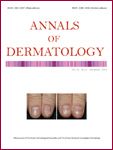
Annals of Dermatology
Connecting researchers and clinicians for skin health advancements.Annals of Dermatology is a prestigious academic journal published by the Korean Dermatological Association, focusing on the latest research and advancements in the field of dermatology. With a commitment to advancing knowledge in skin health and disease, this journal serves as a vital resource for researchers, clinicians, and students working in dermatology and related disciplines. Since its inception in 1989, it has evolved to consolidate its position in the academic community, boasting a Q2 ranking in the 2023 Dermatology category and a Scopus rank of #87 out of 142, placing it in the 39th percentile. Although it operates under a subscription model, the journal's impact factor reflects its significance in advancing dermatological research, attracting innovative studies and reviews that shape clinical practice. With a publication history extending from 1989 to 1996 and then from 2008 to the present, Annals of Dermatology continues to be an essential publication for those devoted to improving skin health.
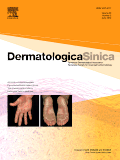
Dermatologica Sinica
Championing Innovation in Skin Disease UnderstandingDermatologica Sinica, published by Wolters Kluwer Medknow Publications, is an esteemed open-access journal in the field of dermatology that has been disseminating critical research since its inception in 2005. With an E-ISSN of 2223-330X and an ISSN of 1027-8117, this journal presents a platform for researchers, clinicians, and students to share cutting-edge findings and advancements in dermatological science. As of 2023, it proudly ranks in the Q2 category of dermatology journals and holds a notable position at rank #62 out of 142 in the Scopus Medicine - Dermatology category, placing it in the 56th percentile for impact. The journal transitioned to an open-access model in 2016, enhancing accessibility and visibility for groundbreaking studies worldwide. With a commitment to fostering innovation in the dermatological community, Dermatologica Sinica aims to advance the understanding and treatment of skin diseases while encouraging scholarly dialogue among practitioners and researchers across the globe.
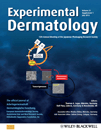
EXPERIMENTAL DERMATOLOGY
Elevating Standards in Biochemistry and DermatologyEXPERIMENTAL DERMATOLOGY, published by WILEY, is a leading journal in the fields of Biochemistry and Dermatology, with impressive rankings including Q1 status in both categories as of 2023. With its ISSN 0906-6705 and E-ISSN 1600-0625, the journal offers a reputable platform for disseminating cutting-edge research and insights into skin biology and related health issues. As a pivotal resource for professionals, researchers, and students alike, EXPERIMENTAL DERMATOLOGY includes a broad scope of topics, fostering a deeper understanding of dermatological conditions and enhancing new therapeutic strategies. The journal’s distinguished performance is highlighted by its Scopus rankings, which place it at the 91st percentile in Medicine-Dermatology and the 65th in Biochemistry. While not an open-access publication, the journal remains committed to ensuring the accessibility of crucial developments within the dermatological community worldwide, facilitating the advancement of both clinical practice and academic inquiry.
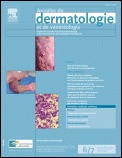
ANNALES DE DERMATOLOGIE ET DE VENEREOLOGIE
Advancing Dermatological Knowledge Since 1977ANNALES DE DERMATOLOGIE ET DE VENEREOLOGIE is a distinguished journal that serves as a vital platform for disseminating innovative research and insightful reviews in the field of dermatology and venereology. Published by MASSON EDITEUR, this journal has been a cornerstone for professionals and researchers since its inception in 1977, offering a wealth of knowledge that spans decades. With its ISSN 0151-9638 and E-ISSN 2214-5451, it is indexed within leading databases, ensuring that the published work reaches a broad audience. The journal currently holds a Q3 ranking in the dermatology category, reflecting its commitment to quality and rigorous peer-review processes. While the journal is not open access, it provides an extensive archive of valuable studies that contribute to advancements in skin health and treatment methodologies. Located in Issy-les-Moulineaux, France, ANNALES DE DERMATOLOGIE ET DE VENEREOLOGIE continues to attract submissions from esteemed professionals, enhancing its reputation as a crucial resource for those dedicated to the ongoing development of dermatological sciences.
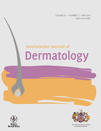
AUSTRALASIAN JOURNAL OF DERMATOLOGY
Empowering professionals with cutting-edge dermatological research.Australasian Journal of Dermatology is a leading publication in the field of dermatology, issued by Wiley since 1951, and reaching an audience of researchers, clinicians, and students interested in the latest advancements and practices in skin health. With an ISSN of 0004-8380 and an E-ISSN of 1440-0960, this journal stands out with its Q2 ranking in both Dermatology and Miscellaneous Medicine, positioning it within the top 61st percentile of its category according to Scopus. Although it does not provide Open Access options, Australasian Journal of Dermatology is committed to disseminating high-quality research that informs clinical practices and promotes scholarly dialogue. By publishing rigorous and peer-reviewed articles focused on various aspects of dermatological science, the journal plays a pivotal role in enhancing the dermatology community's understanding of skin conditions and treatments, making it an invaluable resource for professionals and students alike.
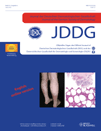
JOURNAL DER DEUTSCHEN DERMATOLOGISCHEN GESELLSCHAFT
Elevating the standard of dermatological research and practice.JOURNAL DER DEUTSCHEN DERMATOLOGISCHEN GESELLSCHAFT, published by Wiley, is a prominent periodical in the field of dermatology, recognized by its Q2 quartile ranking in the 2023 dermatology category. With a dedicated focus on advancing knowledge in dermatological science, the journal publishes rigorous peer-reviewed research that encompasses a range of topics including clinical studies, research methodologies, and innovative treatment practices in dermatology. Its impact is reflected in its Scopus ranking, where it stands at #48 out of 142 in the medicine dermatology category, placing it in the top 66th percentile. Although not an Open Access journal, it serves as a critical resource for researchers, clinicians, and students alike, facilitating the dissemination of high-quality research findings and fostering a deeper understanding of dermatological conditions and treatments. With years of convergence from 2003 to 2024, this journal remains a vital platform for scholarly dialogue and discovery in dermatology.
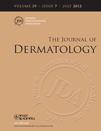
JOURNAL OF DERMATOLOGY
Illuminating the path to dermatological excellence.The Journal of Dermatology, published by Wiley, is a premier academic journal dedicated to advancing the field of dermatology, with its esteemed reputation reflected in its Q1 ranking in Dermatology and a remarkable Q2 ranking in Miscellaneous Medicine as of 2023. Since its inception in 1974, the journal has become a vital resource for researchers, clinicians, and students alike, covering pioneering studies and cutting-edge advancements in skin health and disease. With a Scopus rank of #32 out of 142 in the Dermatology category, placing it in the 77th percentile, the journal underscores its commitment to fostering knowledge and innovation within the dermatological community. Although the journal operates under a subscription model, it remains an essential platform for disseminating impactful research that shapes clinical practice and enhances patient care. For anyone invested in dermatological sciences, Journal of Dermatology serves as a key publication where critical insights and developments are regularly showcased.
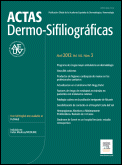
Actas Dermo-Sifiliograficas
Pioneering Research in Skin Health and DiseaseActas Dermo-Sifiliograficas, published by Elsevier España, stands as a pivotal resource in the realms of dermatology, histology, and pathology and forensic medicine. With its ISSN of 0001-7310 and E-ISSN 1578-2190, this esteemed journal has transitioned to an Open Access model since 2020, facilitating broader dissemination of impactful research. Operating from its Madrid headquarters, it has been a vital platform for scholarly exchange since its inception in 1945, continuing through its converged years until 2024. The journal holds a Q3 ranking in dermatology, histology, and pathology and forensic medicine as of 2023, reflecting its relevance in the academic community where it ranks 79th in dermatology and 126th in pathology among its peers. With a commitment to advancing knowledge and practice in its fields, Actas Dermo-Sifiliograficas serves as an essential repository for researchers, professionals, and students seeking to engage with the latest findings and innovative perspectives in skin and disease research.
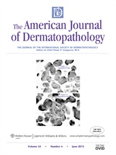
AMERICAN JOURNAL OF DERMATOPATHOLOGY
Elevating Understanding through Cutting-edge ResearchAMERICAN JOURNAL OF DERMATOPATHOLOGY, published by Lippincott Williams & Wilkins, is an essential resource for professionals and researchers engaged in the fields of dermatology, pathology, and forensic medicine. Established in 1979, the journal aims to disseminate cutting-edge research and advancements pertaining to the microscopic examination of skin disorders. With an esteemed impact factor that positions it well within the Q3 category of dermatology and pathology as of 2023, the journal ranks #81 out of 142 in dermatology and #130 out of 208 in pathology according to Scopus. Although it does not currently offer open access options, the journal provides valuable insights and substantial contributions to the understanding of dermatopathology, making it a vital tool for academics, clinicians, and students seeking to stay abreast of the latest findings and practices in the field. Its commitment to high-quality research continues to foster a deeper understanding of skin diseases, enhancing patient care and scientific inquiry alike.

Journal of Cutaneous Immunology and Allergy
Exploring the frontiers of dermatological and immunological research.The Journal of Cutaneous Immunology and Allergy, published by FRONTIERS MEDIA SA in Switzerland, is an esteemed Open Access platform dedicated to advancing research in the intersecting fields of dermatology, immunology, and allergy. Since its inception in 2018, this journal has provided a vital resource for the dissemination of innovative research findings and critical reviews, enhancing our understanding of cutaneous conditions related to immune responses. Although currently classified in the Q4 quartile in both Dermatology and Immunology & Allergy categories as of 2023, the journal continues to strive for recognition within the scientific community, encouraging collaboration and knowledge sharing among researchers, clinicians, and experts. The journal boasts an E-ISSN of 2574-4593 and is committed to making high-quality research freely accessible to all, thus fostering greater insights into the complexities of skin-related immune disorders. Join us in this journey to explore the forefront of cutaneous research and contribute to the evolving dialogue in this dynamic field.